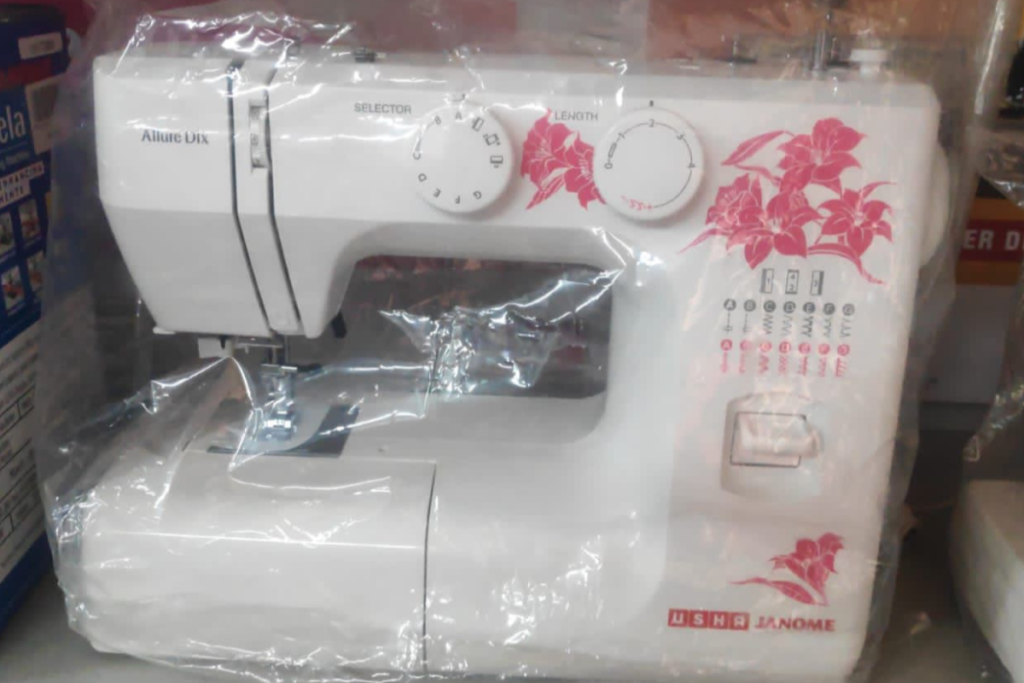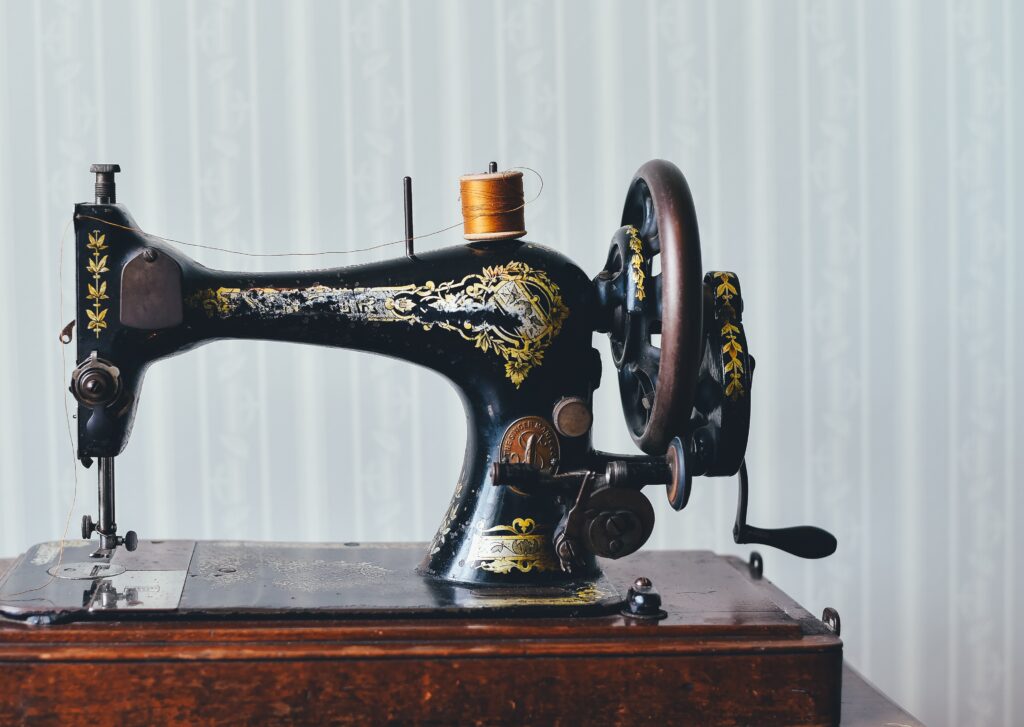SILAI MACHINE OR SEWING MACHINE are available in various sizes and styles. There are household , commercial and portable Silai machines Available in market . Silai machines also known as stiching machines are available in various sizes and prices of Silai machine varies from brand to brand and size to size . Usha sewing machine is the most popular brand available in market . Repairing of silai machine is a challange and we have mastered this technique.


Zig Zag Sewing Machines
For those taking the first steps in their creative journey, the Usha Janome fully automatic sewing machines powered with Japanese technology is the perfect choice. It offers features like a range of built-in stitches, applications to help you with stretch stitching, button fixing, rolled hemming, satin stitch, zip fixing and smocking, and much more. All of these make it remarkably easy for you to enhance your skills and develop and express your unique style. For details on the various models available.

Industrial Sewing / Silai Machines
Usha Industrial machines are the technologically advanced solution for those who need to their creativity replicated in multiple numbers – with precision and speed. Capable of working on various fabrics ranging from light to heavy and speeds varying from 1000 spm to 3000 spm, Usha offers various models to suit a variety of needs. With multiple features including computerized patterns and the convenience of a push button, as well as hands free operation, automatic thread cutter, combination patterns, and mirrored editing etc, these sewing machines are a heaven send for those wanting to do more in less time. For details on the various models available.
A sewing machine is used to stitch the fabric and
other pliable materials together with threads. Sewing
machines were invented during the first Industrial
Revolution to decrease the quantum of manual sewing
done in garment industries. Since its invention, it has
greatly improved the efficiency and productivity of the
fabric, garment and needle industries.
The different parts of a sewing machine and its
functions help the Operator to know the functioning of
a sewing machine. There are different types of sewing
machine used in the manufacturing of garments and
other articles, but here in this Unit, we will study only
single needle lock stitch machine.
A sewing machine controls the fabric with feeding
devices and forms a perfect stitch to join the fabrics. It
has various parts and attachments, each of which have
their own importance and use. There are mainly two
categories of sewing machines that is, domestic sewing
machine and industrial sewing machine.
A Sewing Machine Operator should have the
knowledge and skills to operate the different types of
sewing machine. The Operator should know about the
various operations of the sewing machine, its parts,
Introduction to
Sewing Machine / SILAI MACHINE
1
Sewing Machine Operator – Class IX
2
their functions, its attachments and the terms related
to stitching. Some of the common and important terms
are explained in this Unit.
Evolution of the sewing machine
The sewing machine device was invented in 1790 by
English inventor, Thomas Saint, but he could not
advertise his invention. He designed a wooden awl to
make holes in leather and canvas, thus allowing a needle
and single piece of thread through to hook underneath,
and forming locked chain stitches. Josef Madersperger
began developing the sewing machine in 1807 and he
presented the working machine in 1814.
3
Introduction to Sewing Machine
John Greenough patented the first sewing machine
in the United States in 1842. Elias Howe created a
sewing machine in 1845.
The sewing machine’s recognition quickly spread
like wildfire, initially selling to clothing manufacturers
so that they could construct standardised clothing sizes
on a larger scale. In 1860s, there was a quick popularity
of these machines in the middle class section.
Later in 1889, the machines run by electricity were designed
with motors fixed in them. At first, these were standard
machines with a motor strapped on the side. As with
the expansion of the power in houses, these became
more popular and the motor was gradually introduced
into the casing. Later innovations include the ability
to make more sophisticated stitching patterns. In the
twenty-first century, sewing machine companies have
manufactured several type of machines used for different
sewing techniques and there are also computerised
machines, embroidery machines and special purpose
machines manufactured. The latest machines have LCD
screens, microprocessors, and pre-programmed fonts.
Categories of sewing machine
The following are the main categories of sewing machine.
Domestic sewing machines
These are designed mainly for one person to sew
individual dresses while using a single stitch type.
Modern sewing machines are designed in such a way
that the fabric easily glides in and out of the sewing
machine, speeding the stitching process and saving
time and energy. Some key points for domestic sewing
machines are as follows.
- Domestic sewing machines are usually used in
homes by people simply interested in sewing. - These are commonly used by people in a variety of
projects for dressmaking, and for stitching simple
home furnishing items. - With little changes, these machines can perform a
variety of stitch types.
Notes
- Industrial sewing machines are a heavy-duty
version of a standard basic sewing machine, and
it is used in garment and other related industries. - Industrial sewing machines are used for mass
production.
Notes
Fig.1.1: Operators working on industrial machines - These are heavy-duty machines that work
thousands of stitches per minute. - An industrial machine is well equipped with a
clutch and large servo motor. - Industrial machines are mainly designed to
perform one single specific function in assemblyline based factories. - Some industrial machines are designed to operate
heavier than normal material. - Mainly, mass production requires an industrial
sewing machine, which is designed to sew heavy
material speedily, such as leather, canvas, and
vinyl, at one time.
5
Introduction to Sewing Machine
- The industrial machines are named based on
the function that they serve. Typical names for
industrial machine class include pocket setter,
buttonhole, and programmable pattern sewers, etc.
For instance, a pocket industrial machine can sew
2,000 pockets in an eight-hour production cycle. - Programmable machines can store 10–30 or more
patterns in the memory. - Special purpose industrial machines can give better
output in production, for example, buttonhole
machines, pocket setter, pattern sewer.
Industrial sewing machines are larger, faster, more
complex, and more varied in their size, price and task.
The following are the comparison between domestic and
industrial sewing machines: - The industrial machine is faster, stitching from
3000–6000 stitches per minute, while the fastest
domestic sewing machine stitches not more than
1500 stitches per minute. - The presser foot (See Session 3) on a power machine
is raised and lowered with a knee lift to a special
foot pedal. On domestic machines, it is generally
operated manually using a lever at the back of the
needle bar. - Lubrication is done automatically in industrial
sewing machines whereas it is done manually in
domestic sewing machines.
Types of sewing machine
Though there are different types of sewing machine but
mainly, three types are considered for sewing, as given
below. - Mechanical sewing machines
- Electronic sewing machines
- Computerised sewing machines
- Mechanical sewing machines
These machines are less expensive and are the simplest
type of sewing machines in terms of build. They are
the hand-operated sewing machine and treadle sewing
machine.
Notes
Sewing Machine Operator – Class IX
6
Hand-operated sewing machine
(i) This is the simplest form of
domestic sewing machine which
is operated by hand.
(ii) A handle is attached to the
flywheel (See Session 3) which is
detachable and is used to operate
the machine.
(iii) A hand-operated sewing machine
is generally used for domestic
purpose for simple projects as it
does not work very speedily.
(iv) This machine is suitable where
there is no electricity supply.
Treadle sewing machine
(i) This machine is the same as a
hand-operated sewing machine
but it is operated by feet, with an
additional stand attached to the
machine.
(ii) A belt is attached to the lower
stand passing through the
balance wheel and driven by feet.
(iii) These machines run faster than the
hand-operated sewing machine.
(iv) This machine is also suitable
for the places where there is no
electric supply.
(v) When handling the treadle sewing
machine, both the hands of the
Operator are free to handle the
fabric. Hence, this speeds up the
work of sewing.
- Electronic sewing machine
These machines became popular
during the 1970s. There are many
more features in an electronic sewing
machine than in a mechanical sewing
machine.
Fig.1.2: A hand-operated sewing machine
Fig.1.3: Treadle sewing machine
7
Introduction to Sewing Machine
(i) These sewing machines run faster than manually
operated machines.
(ii) In the electronic machines, balance wheel comes
to motion by a belt, which is attached to an electric
motor.
(iii) A single motor is attached to the electronic sewing
machines and this motor supplies power to the
needle.
(iv) It is essential to control the speed of this machine
by putting pressure on an electronic foot pedal.
(v) Practice is essential to handle an electric sewing
machine.
- Computerised sewing machines
(i) These sewing machines are very fast and specific
to use.
(ii) These machines are similar to the electronic
sewing machines. However, a computerised sewing
machine works with the help of various softwares.
(iii) Computerised sewing machines allow the Operator
to tailor the functions according to the sewing
needs. A computerised sewing machine functions
very appropriately in designing and stitching
various components of the garment like sleeves,
yokes, pockets, etc. These advanced computerised
machines have an LED display or LCD display or
touch screen. They are multi function machines
and are expensive.
The following are some other types of sewing machines
according to their specific applications.
(i) Lock stitch machine
(ii) Chain stitch machine
(iii) Double chain stitch machine
(iv) Buttonhole machine
(v) Button stitch machine
(vi) Bar-tack machine
(vii) Feed off arm machine
(viii) Over-lock machine
(ix) Blind stitch machine
(x) Over-edge machine
